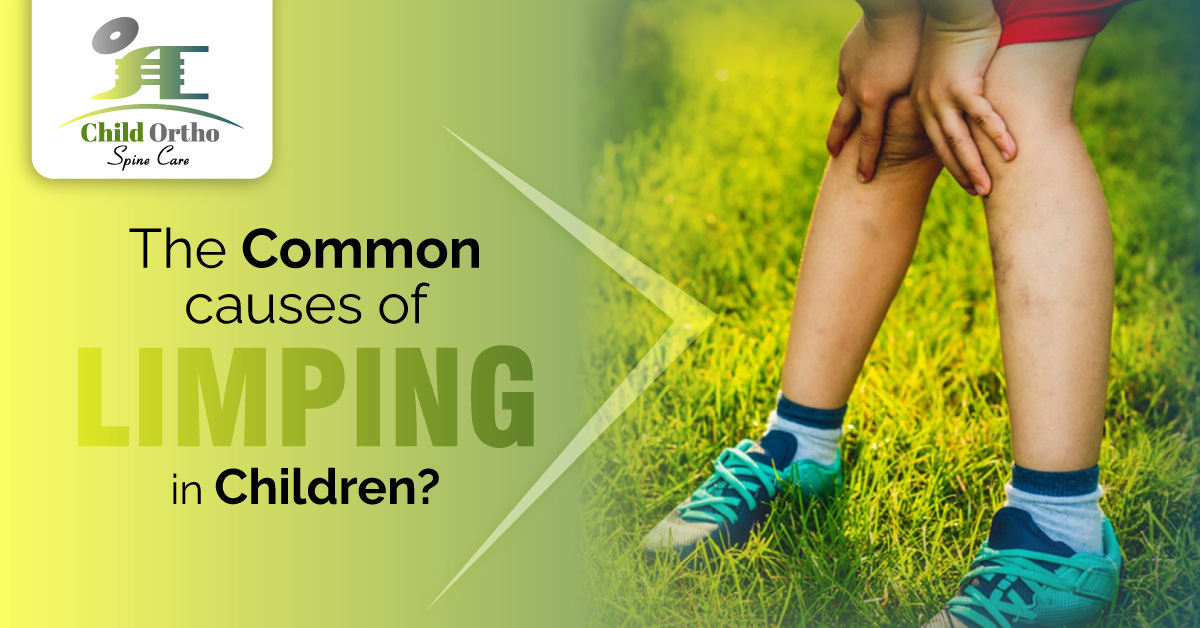- Children’s Orthopaedic & Spine Care Clinic

Limping is a common problem that affects many children. It can be caused by a variety of factors, ranging from minor injuries to serious medical conditions. If your child is experiencing limping, it is important to identify the cause and seek treatment as soon as possible.
Injuries: The most common cause of limping in children is injuries. Children are active and often engage in physical activities that can result in injuries. These injuries can be minor, such as a sprained ankle or knee, or more serious, such as a fracture or dislocation. If your child has recently experienced an injury, it is important to seek medical attention immediately. Treatment may include rest, ice, compression, and elevation, as well as pain medication if necessary.
Infections: Infections can also cause limping in children. One common infection that can cause limping is osteomyelitis, which is an infection of the bone. Other infections that can cause limping include septic arthritis and cellulitis. These infections can be serious and require immediate medical attention. Treatment may include antibiotics and, in some cases, surgery.
Developmental dysplasia of the hip (DDH): DDH is a condition where the hip joint does not develop properly, leading to instability and potential dislocation. DDH is more common in girls and can be present at birth or develop in the first few months of life. If left untreated, it can cause limping and hip pain. Treatment for DDH may include a harness or brace, traction, or surgery.
Juvenile idiopathic arthritis (JIA): JIA is a type of arthritis that affects children. It causes joint pain, stiffness, and swelling, which can lead to limping. Treatment for JIA may include medication, physical therapy, and joint injections.
Legg-Calve-Perthes disease: Legg-Calve-Perthes disease is a condition where the blood supply to the hip joint is disrupted, leading to bone death and potential deformity. It is more common in boys and typically affects children between the ages of 4 and 10. Treatment for Legg-Calve-Perthes disease may include rest, medication, and, in some cases, surgery.
Slipped capital femoral epiphysis (SCFE): SCFE is a condition where the head of the femur slips off the neck of the bone. It is more common in boys and typically affects children between the ages of 8 and 15. Symptoms include limping, hip pain, and stiffness. Treatment for SCFE may include rest, medication, and, in some cases, surgery.
Tumors: In rare cases, limping in children can be caused by tumors. Tumors can develop in the bones, muscles, or other tissues and cause pain and limping. Treatment for tumors may include surgery, chemotherapy, and radiation therapy.
Limping in children can be treated depending on the cause of the limping. In cases where the limping is caused by a minor injury, rest, ice, compression, and elevation may be sufficient. In more serious cases, such as fractures or dislocations, medical attention may be required. Infections that cause limping, such as osteomyelitis or septic arthritis, may require antibiotics and, in some cases, surgery. Developmental dysplasia of the hip may require a harness or brace, traction, or surgery.
If a child is experiencing limping, it is important to consult a doctor if the limping persists for more than a few days, or if it is accompanied by other symptoms such as pain, swelling, or fever. If the limping is sudden and severe, it is important to seek medical attention immediately.
Additionally, if there is a history of injury or trauma, or if the child has a known medical condition that could contribute to the limping, such as arthritis or a bone disorder, it is important to seek medical attention. It is better to be safe and consult a doctor if there are any concerns about the child's limping, as early intervention can help prevent further complications and ensure a speedy recovery.
Limping treatment in children may include rest, medication, physical therapy, and, in some cases, surgery. If your child is experiencing limping, it is important to consult a medical professional for an accurate diagnosis and appropriate treatment.

